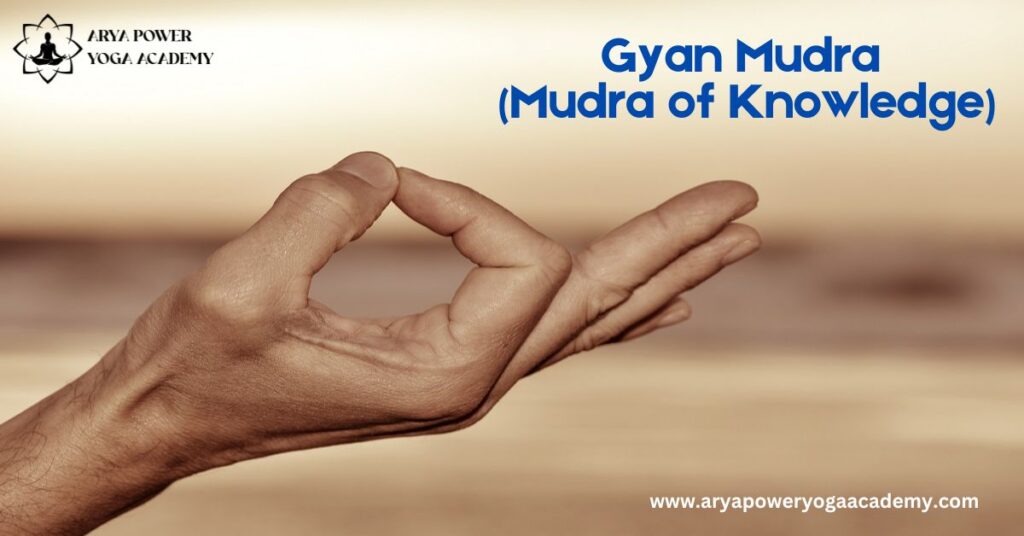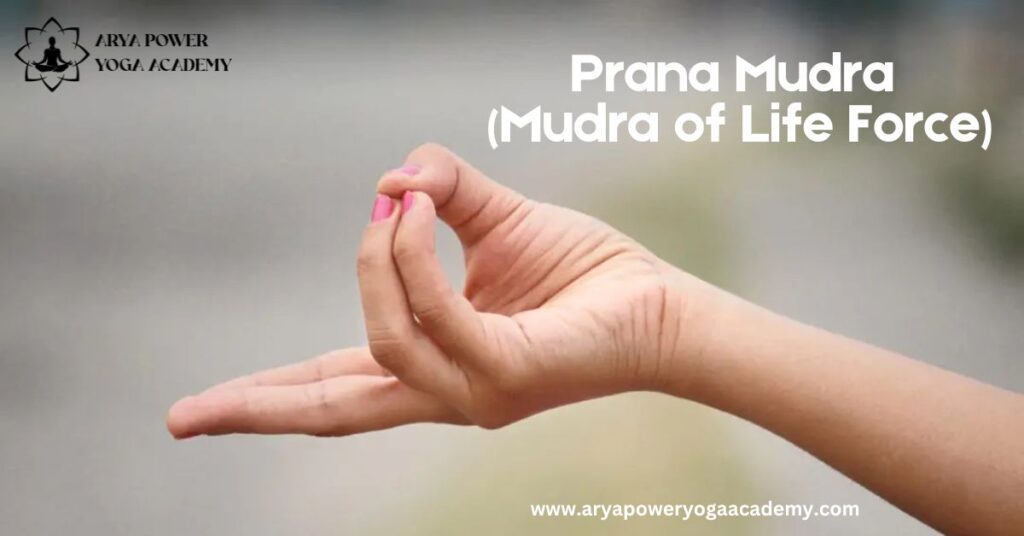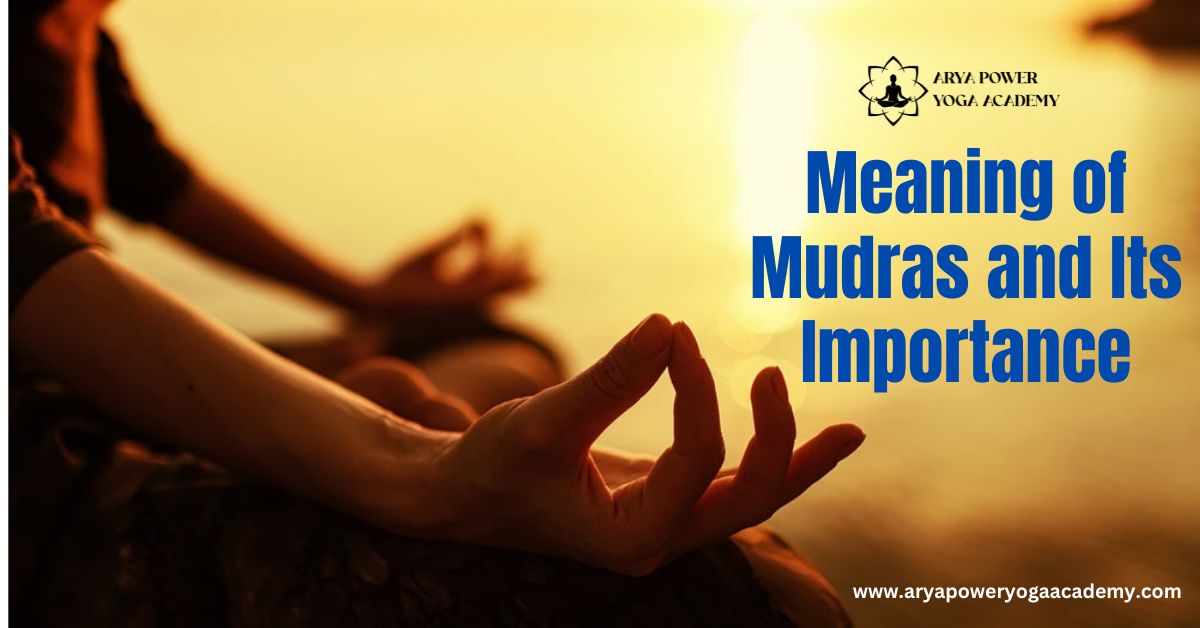admin
November 21, 2024
Meaning of Mudras and Its Importance

Introduction
Mudras are indeed ancient hand gestures holding immense, profound significance within many practices concerned with aspects of spiritual, emotional, and physical wellbeing. These gestures, derived from the Sanskrit word meaning “seal” or “gesture,” mudras are commonly known as the “yogic postures of the hands.” Some of these unique practices date back thousands of years, crossing cultures and civilizations, but are most notably prevalent in the traditions of Hinduism, Buddhism, and the various forms of yoga.
Mudras are a powerful tool for channeling energy while creating a passage between the physical and the spiritual. Whichever way it might bebeing focused in, reducing stress, or even boosting vitalitythe mudras offer versatile benefits that resonate with the needs of modern life. For example, Prana Mudra benefits can include raising the level of life force and strength in a person, making it popular in yoga.
Mudras have gained popularity in the current wellness climate among both practitioners of meditation and yogis. It’s a simple, accessible practice that brings about profound impact, all being part of holistic health. This article explores the history, varieties, meaning of mudras and its importance to explain how hand gestures can be transformed into personal wellbeing and emotion.
What Are Mudras?
Mudras are symbolic gestures executed by the hands, fingers, and sometimes even the body in its entirety to effectively orient the flow of energies within and around us, but also improves mental and physical states of being. These complex gestures are believed to be a gateway or portals to the spiritual realm as they offer a deeper relationship with the inner self and the universe. These are often developed in conjunction with pranayama and meditation, which are specific breathing exercises, and combined with each other to highly amplify all the effects from these sacred gestures.
Mudras originate in the rich and ancient traditions of India, being intricately connected with the philosophies which underpin both Hinduism and Buddhism. Reference to these hand gestures and positions was first noted in those revered sacred texts, the Vedas and the Upanishads, where they were described as instrumental tools helping individuals in their quest for higher states of consciousness and spiritual awareness.
In the context of these mudras, fingers are perceived to represent the five basic elements comprising the universe:
- Thumb: Represents Fire (Agni), symbolizing energy and change
- Index Finger: Represents Air (Vayu), representing movement and change
- Middle Finger: Represents Space or Ether (Akash), representing expansiveness and freedom.
- Ring Finger: Symbolizes the quintessential element, Prithvi, from most traditions.
- Little Finger: Symbolizes the fundamental element of Water, as called Jal in most cultures.
Through the use of these basic elements by skillful manipulation and application through Mudras, specifically hand gestures, practitioners are able to regain and promote a harmonious balance within both the body and mind while increasing their deep sense of connecting with the universal energy of all living things.
Mudras work on the principles of energy flow, or prana, which moves through the body along pathways called nadis. When specific hand gestures are performed, they stimulate these pathways, aligning energy with the chakras and promoting harmony.
Historical Significance of Mudras
Mudras have consistently played an absolutely pivotal and crucial role in various spiritual and cultural practices for countless centuries. These fascinating hand positions are certainly more than just simple gestures; they serve as deeply symbolic tools that are specifically used to invoke divine energies while also expressing profound spiritual truths in a powerful way.
- Mentions in Sacred Texts: Mudras are thoroughly and extensively documented in the ancient Indian scriptures that have been passed down through generations:
- Vedas and Upanishads: In these revered texts, mudras are clearly described as important tools that facilitate meditation practices and rituals, highlighting their significance in the spiritual journey.
- Buddhist Texts: The mudras, or hand gestures, employed by the Buddha consist of fundamental forms, such as the Dharmachakra Mudra, commonly known as the Wheel of Dharma, which symbolically represents his preachings and the state of enlightenment he had achieved.
- Tantric Traditions: In the processes of Tantric practices, numerous forms of mudras are used for the sole purpose of activating one’s chakras within the body for the sake of refining or intensifying spiritual practices and experiences.
While mudras, or symbolic hand gestures, found their origins in the old country of India, they soon crossed borders and spread into many other cultures, like those in China, Japan, and South Asia. In these diverse lands, hand gestures similar to the original mudras became embedded in vital practices, such as martial arts, medicine, and various religious ceremonies that are part of the culture.
Spiritual Practices
In sacred ceremonies of high spiritual importance, mudras were used to channel and direct divine energy. For example, one such vitally important mudra is the Anjali Mudra, or gesture of prayer, which is a symbol powerfully representative of gratitude and the oneness of man with man. Apana Mudra has the essential duty to perform in the procedure of detoxification and purification. It plays a very important role in helping the body rid itself of toxins.
Read more about: Health Benefits of Ustrasana
Various Types of Mudras and Their Specific Purposes
There are types of mudras in yoga, which depend on the specific duty and the various effects that they can evoke in the mind and body. A deep understanding of all hand mudras allows the practitioner to know exactly which gestures to use at specific times.
1. Gyan Mudra (Mudra of Knowledge)

Benefits: It raises one’s concentration and memory powers and is credited as helpful to spiritual growth and development.
How to Practice: Gently touch the tip of your thumb to the tip of your index finger while keeping all of the other fingers straight and straightened. Meaning: This specific hand gesture is often used during a meditation practice and will help to greatly heighten one’s capacity for concentration, while simultaneously soothing and calming the mind.
2. Prana Mudra (Mudra of Life Force)

Benefits: This mudra increases total energy, strengthens the immune system, and helps to significantly deal with any feelings of lethargy.
How to Practice: To carry out this practice, lightly place the very tips of your thumb, your ring finger, and your pinky together and ensure that the remaining fingers are stretched out and separated.
Benefits of Prana Mudra: This particular mudra is excellent and most effective for increasing and restoring energy level considerably while boosting overall health and wellbeing.
3. Anjali Mudra (Mudra of Salutation)

Benefits: This mudra generates a deep feeling of calmness within one, develops a sense of respect in one’s attitude, and develops a feeling of gratitude in one’s self.
How to Practice: The palms are pressed together at the center of the chest.
Application in Everyday Life: Often used when greeting someone and before saying prayers.
4. Apana Mudra: Detoxification Mudra

Benefits: Removes toxins from the body, promotes digestion and helps balance emotions.
How to Practice: The tips of the thumb, middle finger, and the ring finger are touched together.
5. Surya Mudra (Mudra of the Sun)

Benefits: Boosts metabolism, aids in weight loss, and enhances energy levels.
How to Perform: Fold the ring finger and press it gently with the thumb.
6. Varun Mudra (Mudra of Water)

Benefits: Improves hydration, enhances skin health, and balances emotions.
How to Perform: To execute this, gently touch the very tip of your little finger to your thumb.
These examples illustrate how various mudras specifically cater to and address the physical, mental, and spiritual needs of individuals.
The Science Behind Mudras
The practice of mudras is deeply rooted not only in ancient spiritual traditions but also strongly supported by the insights provided by modern scientific understanding.
Physiological Effects of Mudras
Mudras function by:
- Stimulating the sensitive nerve endings that exist in the fingers.
- Forming complex feedback loops that can imprint and change the workings of the brain.
- Balancing the natural flow of energy in the body’s chakras.
Mudras can be said to balance and link up energy with the chakras of the body, thus helping improve both physical and emotional wellbeing in many ways. For instance,
Gyan Mudra can clearly stimulate the crown chakra and hence forward mental lucidity and insight . Prana Mudra activates the root chakra in the body and thus activates more efficiency of general allround vibrancy and life energy.
Recent research conducted in different fields has revealed the multiple advantages of mudras, such as reducing levels of stress, improving mental focus, and enhancing overall health and wellbeing. For instance, a number of studies conducted indicate that there is an improvement in oxygen supply throughout the body and enhanced immune system support, which are very important for maintaining good health.
Mudras in Everyday Life: How to Apply Them
Easily introduce mudras into our daily lifestyles and activities. They blend smoothly, thus being easily applied into our everyday lives
- Morning Routine : To begin the day on a positive note, begin with the practice of Prana Mudra for effective energyboosting and improved focus.
- During Work : Use Anjali Mudra during breaks to relieve stress and regain balance.
- Before Sleep : Practice Apana Mudra for relaxation and detoxification.
Mudras for Specific Needs
- For Anxiety: Gyan Mudra
- For Insomnia: Shunya Mudra
- For Concentration: Hakini Mudra
Consistency is key to experiencing the full benefits of mudras.
Importance of Mudras in Modern Wellness
With the advent of modern times, mudras have become an essential and integral part of the wellness practices that have really gained ground, complementing all disciplines including yoga, meditation, and mindfulness.
- Stress Relief
There are certain mudras that basically remove stress levels while encouraging emotional equilibrium and overall wellbeing, such as the famous Anjali Mudra. - Holistic Health
Mudras are very simple to practice and can be practiced by any one of us regardless of our walk of life, hence enhances our overall health across physical, mental, and emotional dimensions. - Testimonials
Many practitioners report improved focus, energy levels, and emotional stability through regular practice of mudras.
Conclusion
Mudra hand signs and meanings in yoga and meditation are symbolic hand gestures, wherein ancient wisdom is communicated to the modern world regarding ways of health and wellness. These very subtle but highly potent hand movements are much more than mere symbols; they function as tools for channeling energy and balancing the body’s physical, mental, and spiritual dimensions. This means that each Mudra carries with it a very specific meaning and purpose and offers intensive benefits when practiced regularly.
For instance, the Prana Mudra, which is called the “Mudra of Life,” keeps one’s inner energy active and enhances the vitality for a healthy body and mind. At the same time, Gyan Mudra is called the “Mudra of Knowledge,” which brings concentration, clarity, and wisdom to mind. By including these Mudras in everyday activities, the person will start to feel vital harmony and balance around.
Mudras do not demand complicated preparation or long time; they can be easily assimilated into meditation or even at moments of stillness during the day. As they balance the energy flow in the body, Mudras create a link between ancient spiritual practices and modern-day wellness strategies, enabling people to live healthier, more mindful, and energized lives.
Frequently Asked Questions
Each mudra should be held for about 10–20 minutes each day to receive the best results.
These are very simple and portable Mudras and can be practiced anywhere since they do not require any special setting or equipment.
Mudras are safe for all ages and fitness levels.
Prana Mudra is the best choice for enhancing energy.


